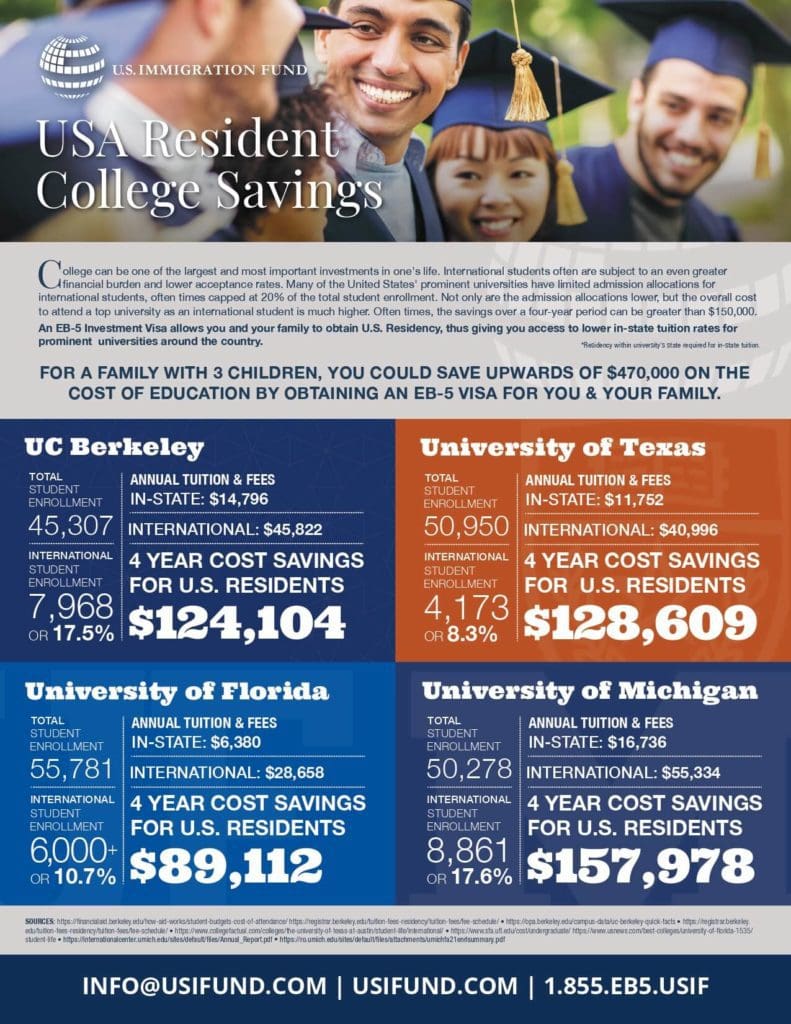College is one of the biggest investments many people will make in a lifetime. The potential returns on higher education can be equally sizable, paving the way for research and career opportunities across any number of fields and disciplines, from medicine to engineering and all stops in between.
The United States is home to some of the most prestigious colleges and universities in the world, making it a top option for students from all over the world. Unfortunately, while the potential is great, the burden of investment can also be significant. For international students, the scale is even greater, with higher financial costs for tuition and lower acceptance rates than in-state applicants. The demand is high, and so are costs, and the chances of acceptance narrow for those who are not residents.
According to one survey by U.S. News, in-state annual tuition averages about $10,423, while non-resident tuition runs about $22,953. But that’s just the average. In many cases, the disparity is much larger. In fact, tuition for international students commonly runs $100,000+ more than in-state tuition over a four-year period.
For example, UC Berkeley tuition for students living in California is $14,796 per year. For international students, that cost jumps to $45,822 a year. Over a four-year period, the savings for California residents amounts to $124,104 per student. For the University of Michigan, the savings are even more dramatic, totaling over $150,000 per student over a four-year period.
Because in-state tuition is significantly less expensive, in-state schools are a highly attractive option for students and their families living in the U.S.

While cost remains a primary factor for most students and their families, in-state residency status also impacts acceptance rates. At most colleges and universities around the United States, it is harder to get into the school if you are not a state resident. At some universities, including the University of Michigan, Georgia Tech, the University of Texas at Austin and others, the acceptance rate of in-state students is more than double that of non-residents. This can be a great opportunity for in-state applicants, especially when applying to highly sought-after programs.
For many schools across the country, the international admissions rate is less than half of the overall admissions rate for the school. This means international students must compete against other international students as well U.S. applicants, but with far fewer available enrollment spots. For example, at the University of Texas, international students comprise just 8% of the student body.
Between the higher acceptance rates and lower costs, in-state residency clearly has significant advantages when it comes to applying for college.
Under just one EB-5 application, the EB-5 investor, his/her spouse, and their unmarried children under the age of 21 years are all eligible to receive green cards, opening up a whole new world of access through lawful permanent residency status. In many cases, this residency status may allow your family to qualify for in-state college tuition, saving tens of thousands of dollars compared to international enrollment costs. The difference in costs is enough to cover some graduate degrees!
With an EB-5 Investment Visa, families gain a path to obtaining U.S. Residency, allowing students to apply to the school of their choice while also giving them access to lower tuition rates and higher acceptance rates to the most prominent universities around the country.
Have questions about the EB-5 investment process? Schedule a consultation to meet with an EB-5 expert.